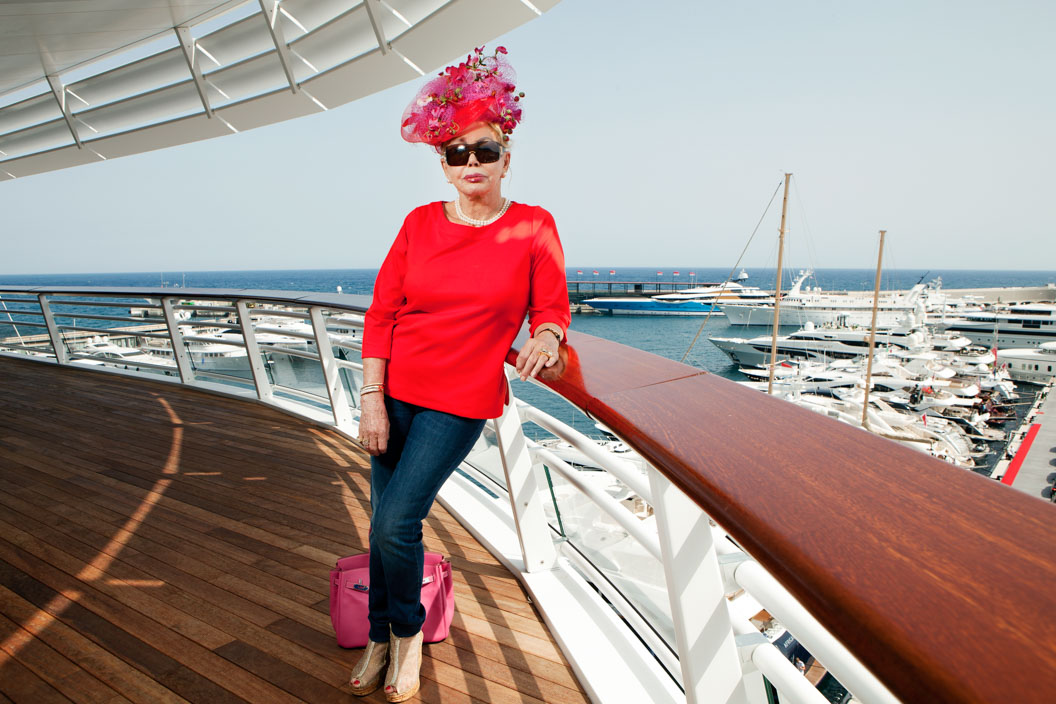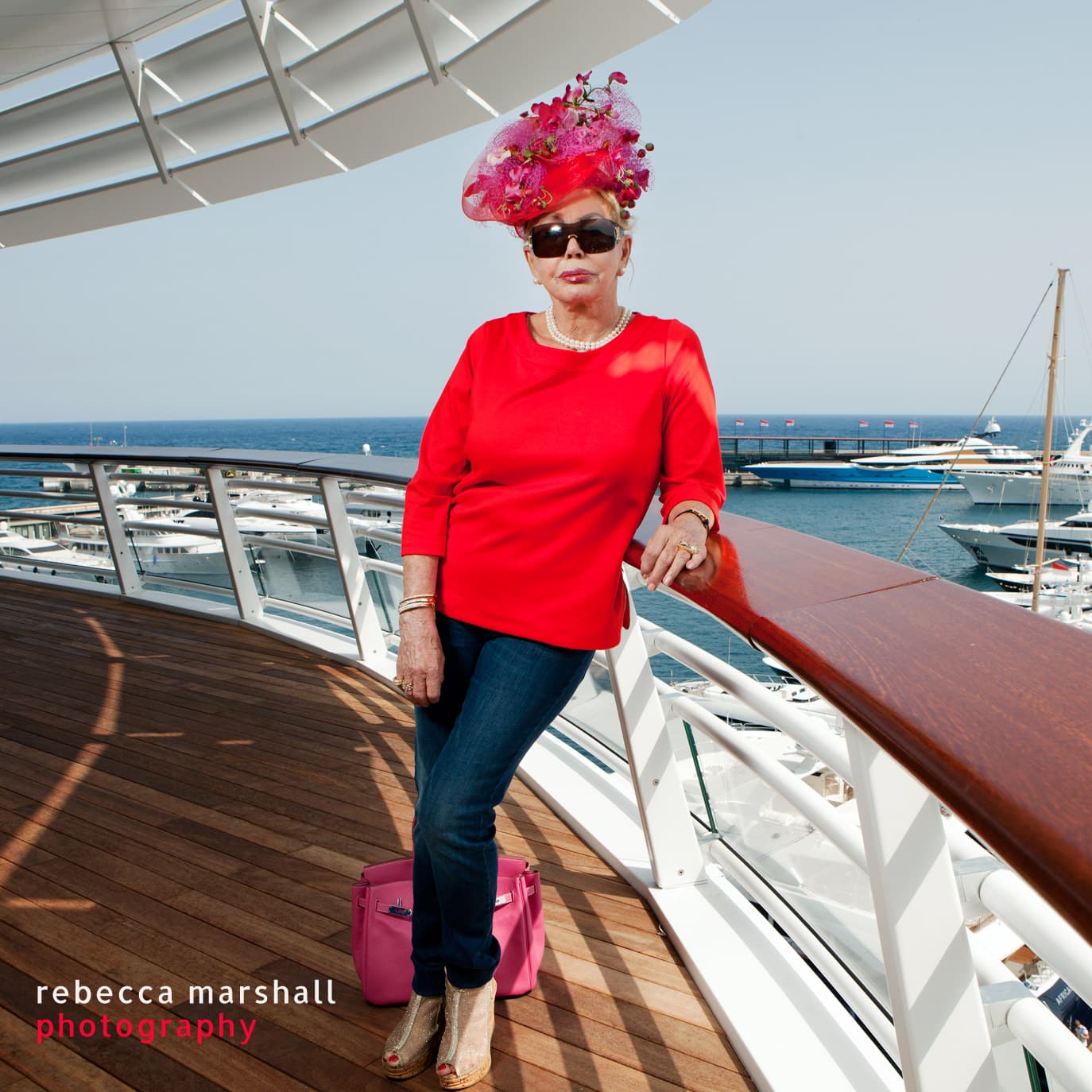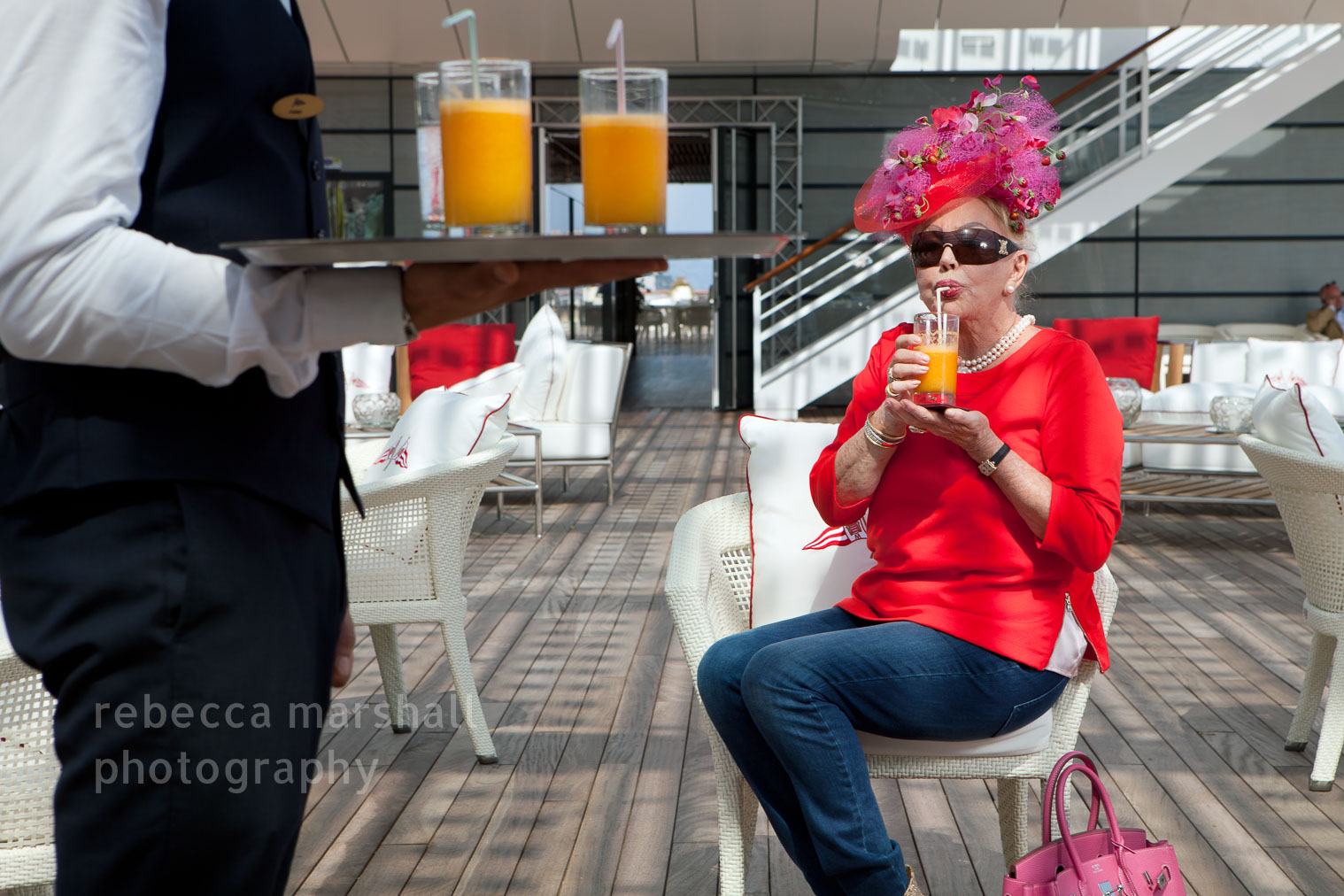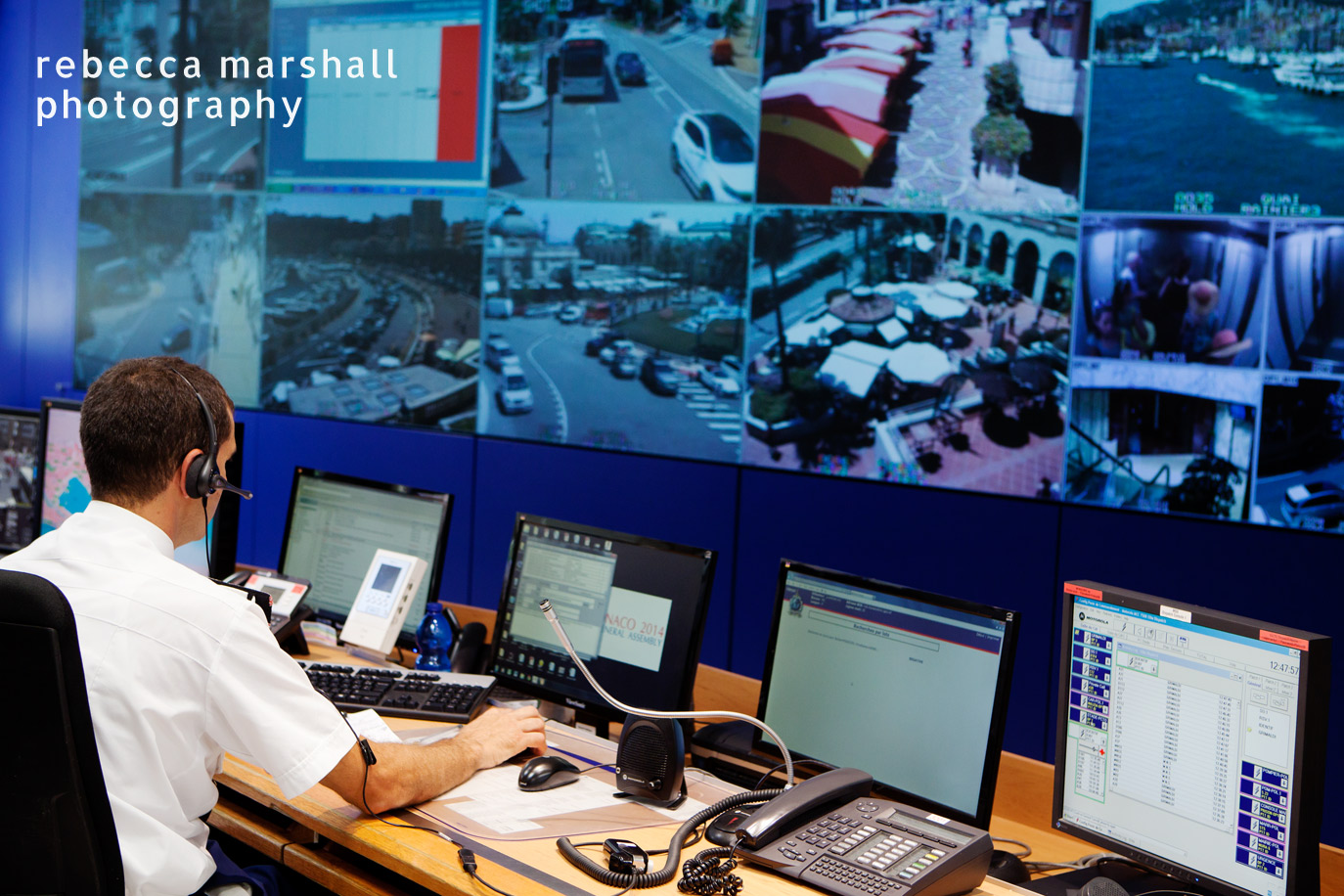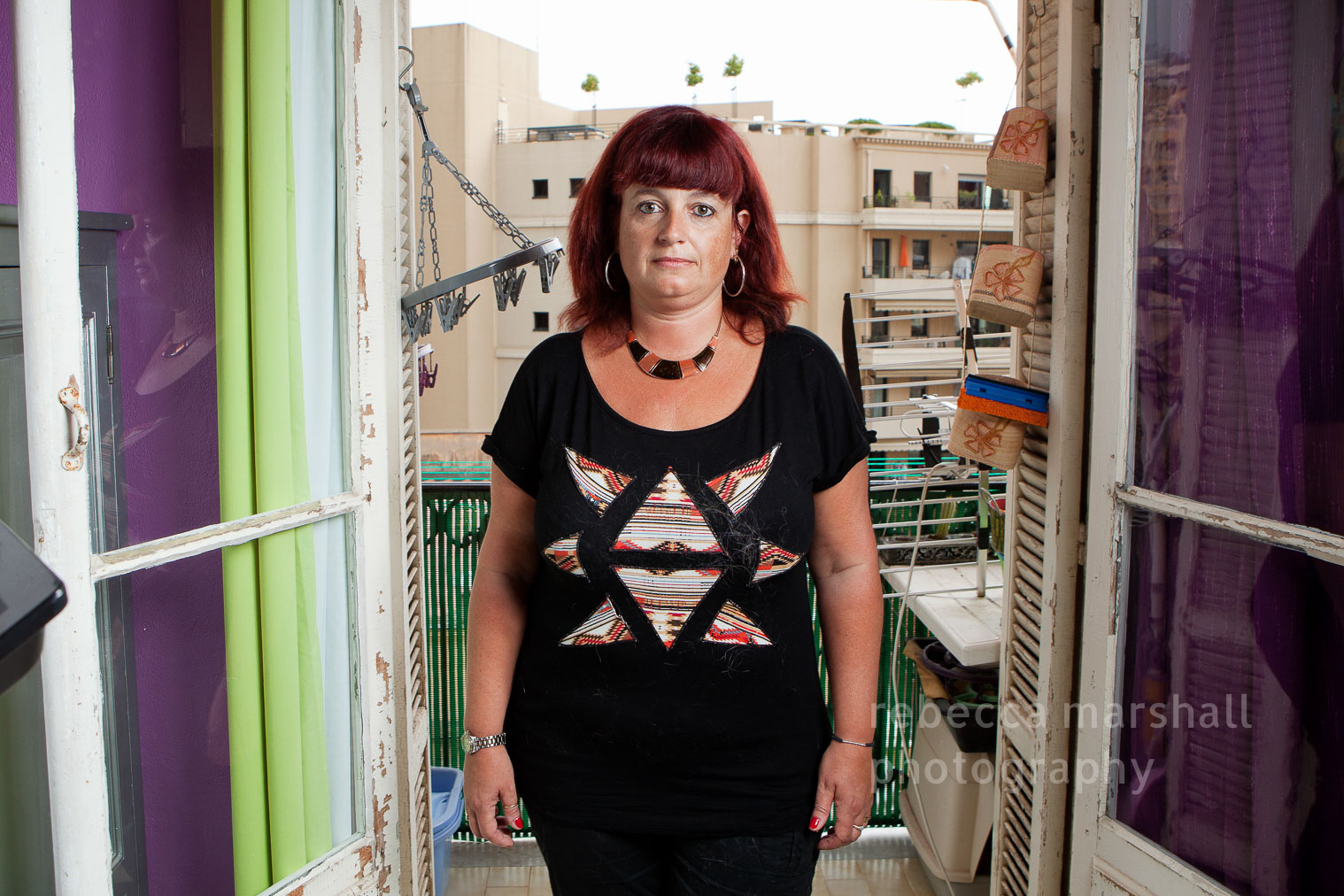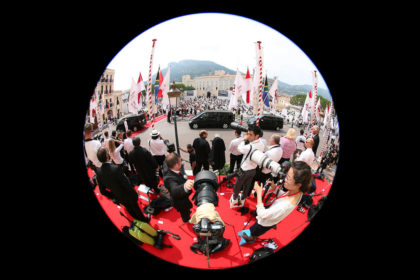Think of Monaco and you’re more likely to think of Formula One and champagne than murder mysteries. However, in May this year, the richest woman in Monaco, Hélène Pastor, was gunned down in nearby Nice. The prime suspect in arranging her murder is her son-in-law and the suspected motive was a potent mix of money and social rejection. Eyes across the world briefly turned to Monaco, including those of German news magazine Der Spiegel. As photographer, I joined two reporters in their quest to put together a feature about Monaco’s social culture, the ‘breeding ground’ for this crime. We went from the seat of government to a back-street apartment block mid-demolition to meet a varied selection of Monégasques.
Hat made of strawberries
Baroness Marianne von Brandstetter has nothing to do with either the Pastor real estate business nor the murder of Hélène Pastor, but was chosen as an eloquent spokesperson for Monaco’s privileged overclass.
Living in a suite at the Fairmont Hotel in Monte Carlo, the Baroness is blessed with an estimated fortune of $250 million and a colourful sense of style. When I first saw her, the sparkle in her eye and the incredible hat she was wearing (an arresting mix of fake orchids, plastic strawberries and bold acres of red and pink netting, made by a Parisian modiste to the Baroness’s own design), I knew that Marianne von Brandstetter was going to be a joy to photograph.
The joy appeared to be shared. As soon as I showed up, her interest in the journalists waned significantly. As I was setting up for her portrait in the hotel’s breakfast restaurant, she expressed her appreciation of me. “Do you like jam darling?” I agreed that I did like jam, in a sort of general conversational way, and was then surprised to see her opening my photographer’s bag and scooping jars off the tables around us into it. I didn’t quite know what to say, and just hoped that the jars were unopened and unsticky, as she carefully nestled them among my camera lenses.
In fact, the Baroness too appeared to enjoy being photographed so much that we ended up doing two portrait sessions, the second, at her suggestion (and much encouraged by my Spiegel colleagues), inside the brand-spanking-new Monaco Yacht Club, where a strict press photography ban was in place. The value of the Baroness’s patronage (and the will of the slightly obsequious client manager) however trumped all communications directives (and the will of the eclipsed press officer) as the Baroness invited us all for drinks and railroaded all objections to photography at the Club. We moved to a terrace on the roof, where the Baroness, her young Italian stylist tripping along in her shadow, happily posed for my portraits.
Yes, Minister
The government Minister of the Interior, however, was altogether a less photogenic and less comfortable subject to work with. In Monaco, there is no chewing gum to step in and no unemployed people or political opponents to sully the state’s pristine image, and the powers-that-be prefer to keep it that way. Receiving high-profile foreign journalists with questions about an unsolved murder is presumably not what the Minister took his job for.
However, there was no denying that one of Monaco’s own (the Pastor dynasty is rumoured to own 15% of all real estate in Monaco) had been shot in the face, most probably by another of Monaco’s own (though not literally, of course; a hit man had been hired) and the standard speech the Minister gave us about Monaco’s highly effective security operation didn’t quite cut the mustard. Despite repeated attempts to recount his charming anecdote of how the Pink Panther gang (high-end jewellery store robbers), feared and hounded across the world, were finally apprehended in the principality by its own police force, Der Spiegel’s reporters were not easily put off the scent. I could see the Minister was going through some internal conflict between showing us his best-foreign-press-face and wanting us gone. His mood was not improved by the photographer poking around his government office during the interview.
However, he brightened visibly when a splendid idea came to him – he would arrange for us to be whisked away for an immediate, privileged tour of the Monaco police surveillance headquarters.
On the other side of the lens
Sleeping with the enemy might be an entirely inaccurate description of my visit, but those who have read my blog post about how important it is for a photographer in Monaco to obtain permissions in advance of a shoot there will understand how peculiar it was for me to be inside Surveillance HQ, watching security camera feed rather than being the one watched. There was a certain irony in the fact that, scheduled to take portraits in private homes, I hadn’t arranged any photographer authorisation for my work in Monaco that day. The Minister’s call had ensured that the police PR machine was well-oiled for our visit though and I snapped away, safe in the knowledge that none of these charming officers would dream of asking for my papers.
The impressive battery of screens in the main control room showed feed from security cameras across the state and, with one camera to every 70 residents, there was a lot of channel hopping going on. I made the most of all the love in the room to ask ‘off the record’ about surveillance of photographers. The chirpy officers hinted that, away from the Palace and Casino Square, it is rare that they raise the alert if they spot a big lens on a street (although, they admitted, policemen on the beat can always take the initiative and ask to see a photographer’s authorisation anywhere in the principality).
Eviction stand-off
We left police HQ and crossed over to the other side of the tracks. During all the time I have spent in Monaco, I haven’t had much to do with members of the state’s underclass – inhabitants who are Monegasque by birth right yet have no fortunes to speak of and lead ‘normal’ lives. Well, it seems they may be a dying breed.
On the top floor of a once-beautiful Belle Époque building above the port, dwarfed by the shiny modern towers next door, Sylvie Ciantelli and her family are making a last stand against the demolition of their home. Sylvie’s husband is an electrician and nth-generation Monegasque, which gives him the historical entitlement of paying an extremely low rent by Monaco standards (roughly comparable to my own in France). Their flat is very small, and has required some imaginative DIY (in the form of bunk beds in the lounge and ingenious storage solutions) to make it accommodate them, their 3 daughters and cat. However, the building was sold to the Pastor real estate dynasty 3 years ago and is now being torn down to make way for a luxurious residential complex (where apartments will be sold for 80,000 € per square metre). All the other tenants have been bought out or forced to leave, but Sylvie and her husband simply don’t want to go. So the building is being demolished, literally all around them.
To be fair, finding somewhere else to live in Monaco within their means won’t be very likely and their rights as tenants are not as strong as they would be in France. It seems that the Pastor company are playing dirty to get this thorn out of their side – including inviting a heavy rock band to practise regularly in the empty flat next door, late into the night. Even from my point of view as a photographer, the dust and noise in the building made a short visit and the making of a portrait pretty challenging.
